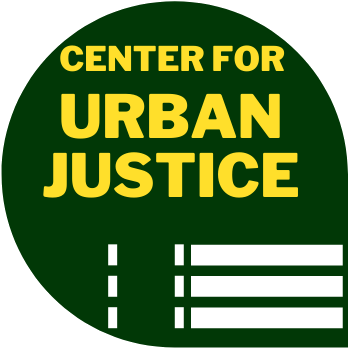As the upcoming elections approach, ZUG has decided to provide a clear list of demands to governmental administrations.
1. Safe Crossings Now
Make crosswalks safe by strictly enforcing existing laws and implementing necessary improvements.
Pedestrian safety is paramount in any city, and it’s the responsibility of the government to ensure that crosswalks are safe for use. Strict enforcement of existing laws and necessary improvements to infrastructure can prevent accidents and fatalities, particularly among vulnerable road users like children and the elderly.
A variety of measures can be implemented to make crosswalks safer, including compliance to current laws, installing car-activated signals, raised crosswalks, and road markings to make crosswalks more visible.
2. Safe and comfortable mobility for all
Design cycling and pedestrian routes that are spacious, comfortable and safe.
Quality infrastructure that foster safe and comfortable walking and cycling is crucial for creating a livable city.
More people walking, wheeling and cycling means less emissions, more physical activity and less stress.
Existing cycling infrastructure can be improved by ensuring physical separation from motorised traffic.
The cycling infrastructure network could be expanded to allow easy movements throughout the city.
Pavements can be enlarged to allow easy walk-ability for everyone (e.g. families with small kids, people on wheelchair).
3. Green and vibrant public spaces for all
Prioritize human interaction and community building. Create more green public spaces and design them alleviate the effects of climate change.
Green public spaces promote community building and improved quality of life for residents. These spaces can also help mitigate the effects of climate change such as extreme.
Underutilized spaces, such as parking lots or vacant lots, can be converted into parks and parklets.
In addition, governments could prioritise funding for the creation and maintenance of green spaces, including the use of sustainable landscaping practices and the integration of green infrastructure like rain gardens and bioswales.
4. Real 30 km/h streets, not just signs
Advocate for changes in the road infrastructure that create true reduced-traffic zones instead of relying on inadequate street signs.
Reducing speed limits in residential areas can prevent accidents and fatalities, particularly among vulnerable road users like children and the elderly. However, simply posting speed limit signs is not enough to ensure compliance.
The government can implement infrastructure changes that create true reduced-traffic zones, such as speed humps or chicanes, to reduce vehicle speeds in residential areas. They can also increase police presence to enforce existing speed limits and prioritize public education campaigns to raise awareness about the importance of reducing speeds in residential areas.
5. End cut-through traffic
Eliminate cut-through traffic in residential neighbourhoods and return them to the residents.
Cut-through traffic in residential neighbourhoods can increase noise pollution, create safety hazards for pedestrians and cyclists, and negatively impact the quality of life for residents.
The government can implement traffic-calming measures, such as roundabouts or speed humps, to discourage cut-through traffic in residential areas. Additionally, they can prioritize the creation of alternative transportation options, such as bike lanes or public transportation routes, to alleviate traffic congestion and reduce the need for vehicular traffic in residential areas.
6. Break the car dependency cycle
Enable and encourage people to choose a lifestyle that does not rely on cars.
Reducing car dependency can promote sustainable transportation options, reduce air pollution, and create a more liveable city for all residents. It can also promote physical activity and improve public health.
The government can enable and incentivise a lifestyle that offers residents transportation choices, such as bike lanes and public transportation, and fair access to public space rather than forcing car ownership through design. This can be achieved through a combination of infrastructure improvements, public education campaigns, and incentives, such as subsidies for public transportation or bike-sharing programs. Additionally, the government can promote telecommuting and flexible work schedules to reduce the need for daily commuting
7. Transparent and accountable governance
Embrace an open and collaborative approach to governing that incorporates researched facts and prioritises constructive criticism over patronising the public.
It’s essential for the government to be transparent and accountable to the public it serves. Transparency promotes trust between the government and the public and can help prevent corruption and abuse of power. Openness also allows for constructive criticism and citizen feedback, which can inform better decision-making and policy implementation.
The government can adopt various measures to ensure transparency and accountability, such as making information easily accessible to the public, hosting public forums and meetings to encourage dialogue, and creating mechanisms for the public to provide feedback and hold officials accountable. The government should also be open to criticism and willing to incorporate citizen input into decision-making processes. Finally, all government actions and policies should be backed by researched facts and evidence, not opinions or political expediency.
